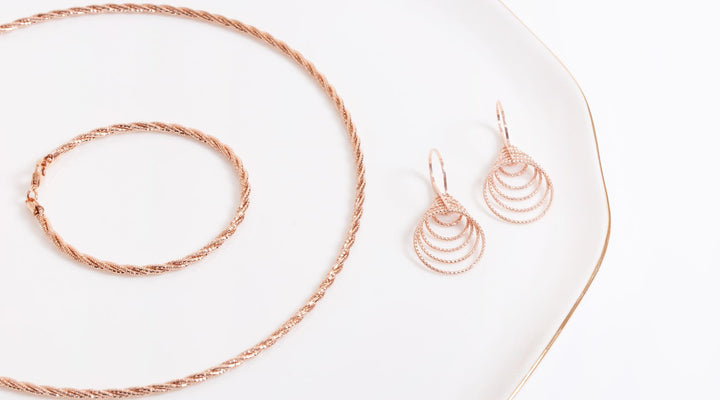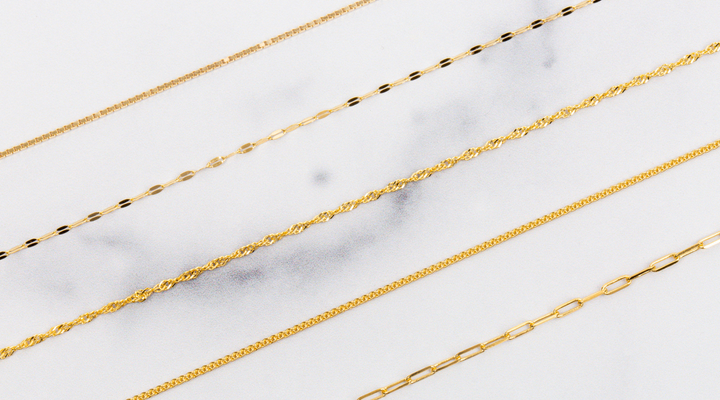A Guide on How to Care for Pearls
Posted by Deven Davis on

A Guide on How to Care for Pearls
Pearls have been used in jewelry as far back as Ancient Greece. Their timeless appeal makes them an excellent investment piece that you can pass down for generations. However, if you want your jewelry to last, you need to understand how to care for pearls.
Pearls are stunning to look at, but they're also delicate. That's why knowing how to clean and store your pearl jewelry is key to ensuring it lasts. Here are some tips you can use to care for it.
Cleaning Pearls the Correct Way
Each time you wear your pearls, be sure to wipe them down afterward with a soft, dry cloth. While pearls benefit from absorbing some of the natural oils the body produces, they don't benefit from perfume, sweat, or dirt. To keep your pearl jewelry looking pristine, be sure to wipe it down.
That said, only use a damp cloth if you need to. You may notice stains on your pearls after a time, and you can clean these with a cloth dipped in lukewarm water and mild dish soap. Again, only do this when you notice stains or your pearls are dirty.
Never submerge your pearl necklace in water! The water can ruin the silk thread used to string the pearls together. Be sure to let your necklace dry completely before storing or wearing it to preserve the silk.
Unfortunately, the silk thread doesn't benefit from body oils like the pearls do. It pays to bring your pearls to a jeweler from time to time to get them professionally cleaned. Your jeweler can also check on the state of your necklaces and bracelets to ensure the silk is in good condition.
Restringing Pearl Necklaces
Over time, your pearl necklace can stretch out or fray. The more frequently you wear your jewelry, the more often you may need to restring it.
Generally, people will restring their pearls every two or three years. However, if you wear your pearls weekly or more often, you may need to have them restrung each year.
You can check to see if you need them restrung by examining the length of your necklace. If the knots appear stretched out, your necklace looks uneven, or you notice any fraying, it's time to have the piece restrung.
The price of pearl restringing varies depending on the length, though it's usually around $50 - $100 or so.
Of course, you won't have to worry about the string if your pearl necklace is designed with sterling silver or gold instead. Designs such as this Pearl Y Necklace offer the beauty of pearls without the high maintenance of silk thread.
How to Care for Pearls: Dos and Don'ts
Never expose pearls to harsh chemicals such as vinegar, ammonia, chlorine bleach, and hydrogen peroxide. Also, limit exposing your pearls to perfume and hairspray. These chemicals can ruin the pearl's surface.
If you must use perfume, lotion, makeup, and hairspray, only put your pearls on afterward. Take your pearls off first before changing clothes, washing your face, or getting ready for bed.
Always take your pearls off before exercising to limit exposing them to sweat and bacteria. The acids in sweat can damage them.
Don't wear pearls over rough fabrics, such as wool, as this can cause scratches.
Avoid submerging your pearl jewelry. Never wear pearls while swimming, in the shower, or while doing dishes. Water contains chlorine, which can separate pearls from their backings, ruin the pearl's luster, and damage the thread.
Store pearl jewelry in a soft case or cloth. This protects them from rubbing against other pieces of jewelry and hard surfaces that can scratch and damage their surface.
Again, remember to wipe your jewelry with a soft, dry cloth after each use. This wipes away excess oil, dirt, and sweat.
Wear your pearl jewelry often. Pearls benefit from the moisture produced by our bodies. Just remember to take them off if you're exercising, going swimming, or taking a shower.
Proper Storage for Your Pearls
Whether it's a necklace or pearl earrings, proper storage is essential to ensuring the longevity of your piece.
If possible, keep your necklace, bracelet, or earrings in the original pouch or container they arrived in. If you no longer have it, a lined jewelry box, silk bag, or a soft cloth will do. Avoid storing your pearls next to other pieces, as it's more likely they'll get scratched.
Never store pearls in an air-tight bag or container. Pearls require moisture, or they might crack. Also, never store pearls in plastic bags or containers.
Another common mistake pearl owners make is hanging necklaces from hooks. Hanging your necklace or bracelet in this way puts extra strain on the thread and can stretch it out prematurely.
There are plenty of jewelry storage ideas out there, from simple jewelry boxes to storage behind mirrors. Find a solution that protects your pearls but doesn't keep them entirely out of sight and out of mind. After all, you want to wear your pearls at least somewhat regularly.
Another common mistake people make is taking off their jewelry at night and storing it on their nightstands. Not only is this a recipe for a lost pearl earring, but it can scratch your pearls. If you plan on storing your jewelry on your nightstand, buy a soft jewelry tray with compartments.
Protect Your Pearls
Knowing how to care for pearls and understanding the dos and don'ts of cleaning and storage will help to extend the longevity of your jewelry. Use these tips to ensure you're properly caring for your pearls so that you can one day pass them on to future generations.
Are you looking to add pearl jewelry to your collection? Pearls are a classic look that withstands the test of time. Here at Roma Designer Jewelry, we offer a wide selection of necklaces, bracelets, earrings, and more high-end jewelry you can treasure.
Take a look at our selection to find your new favorite piece.










